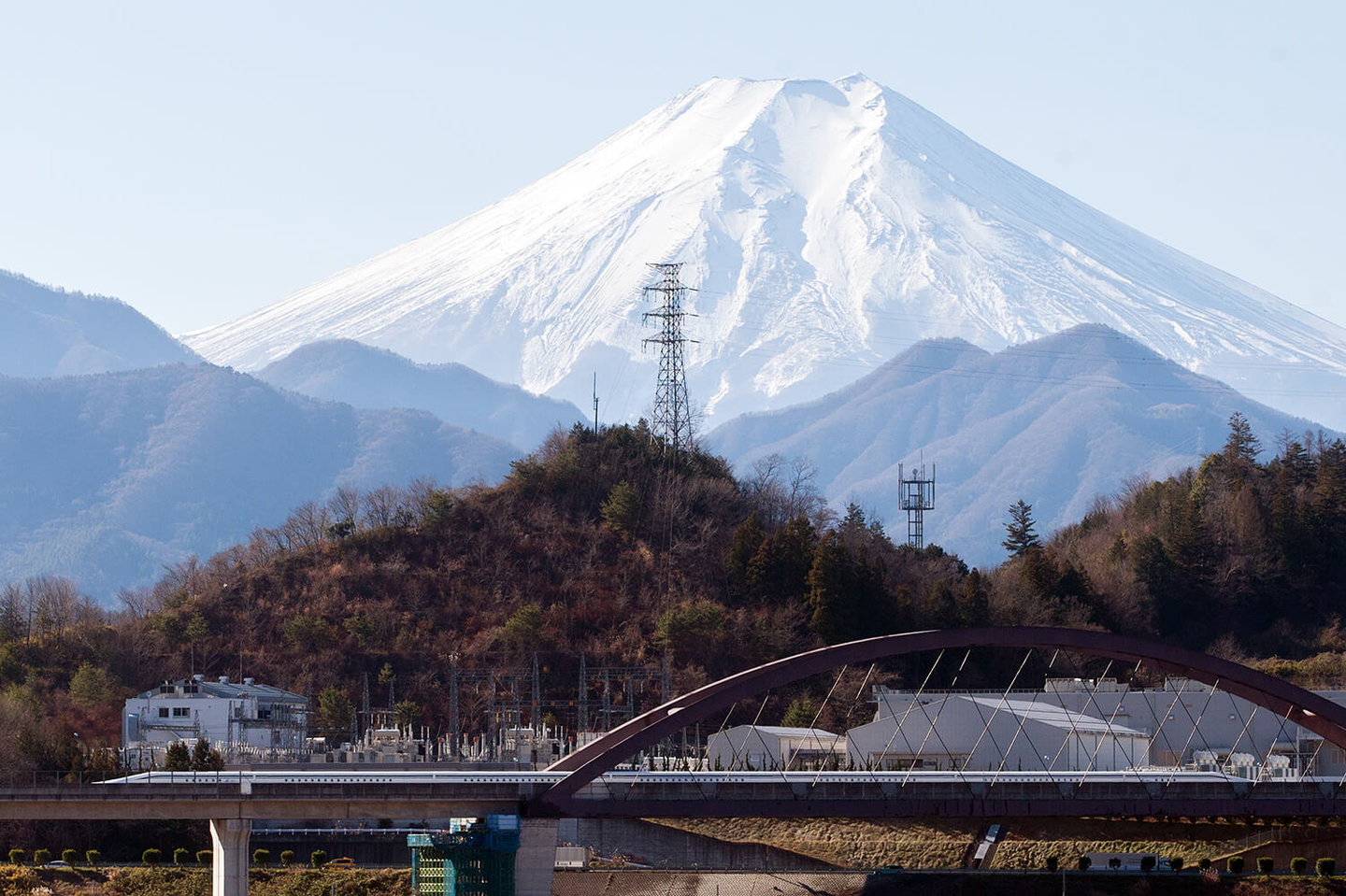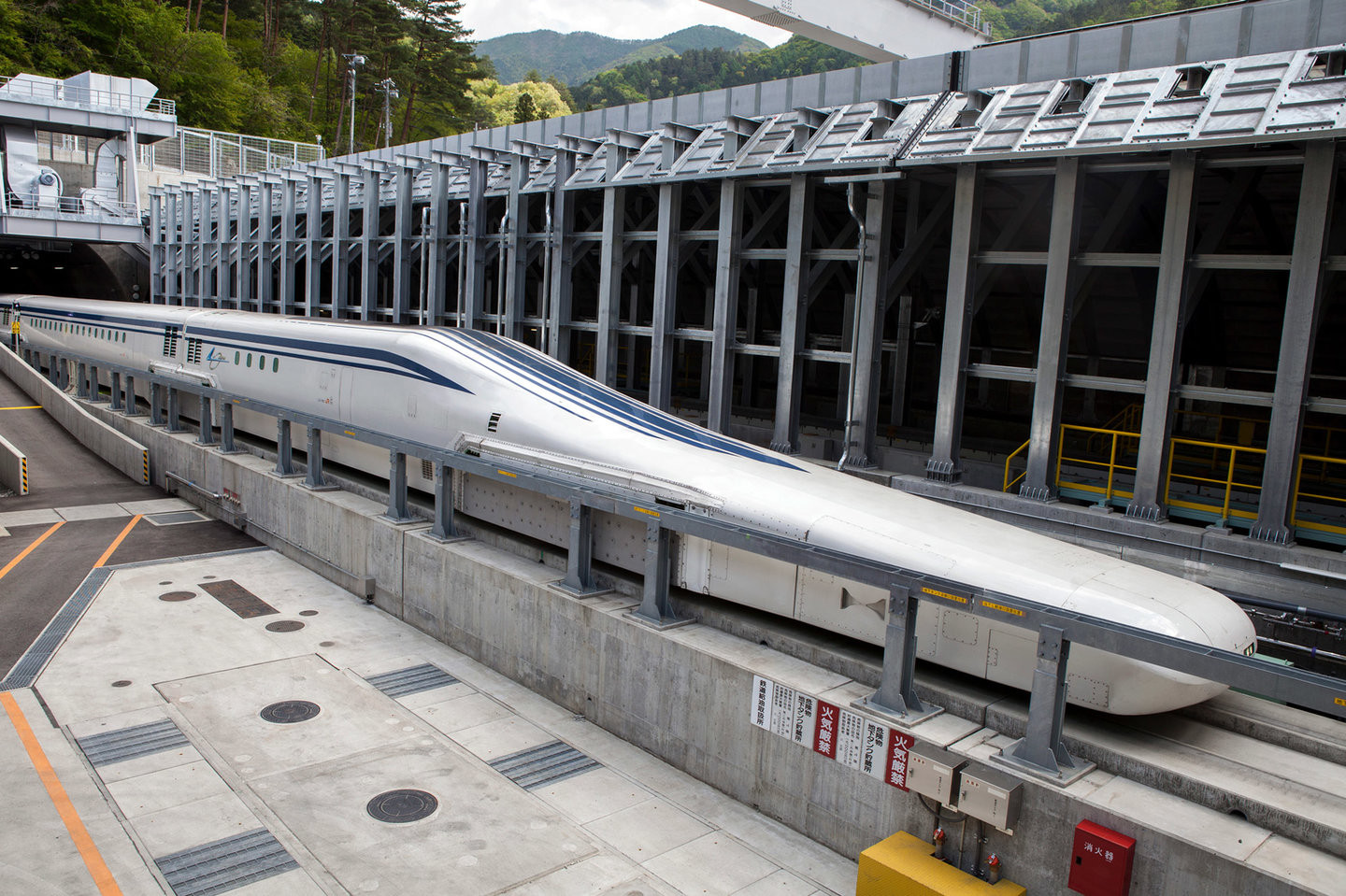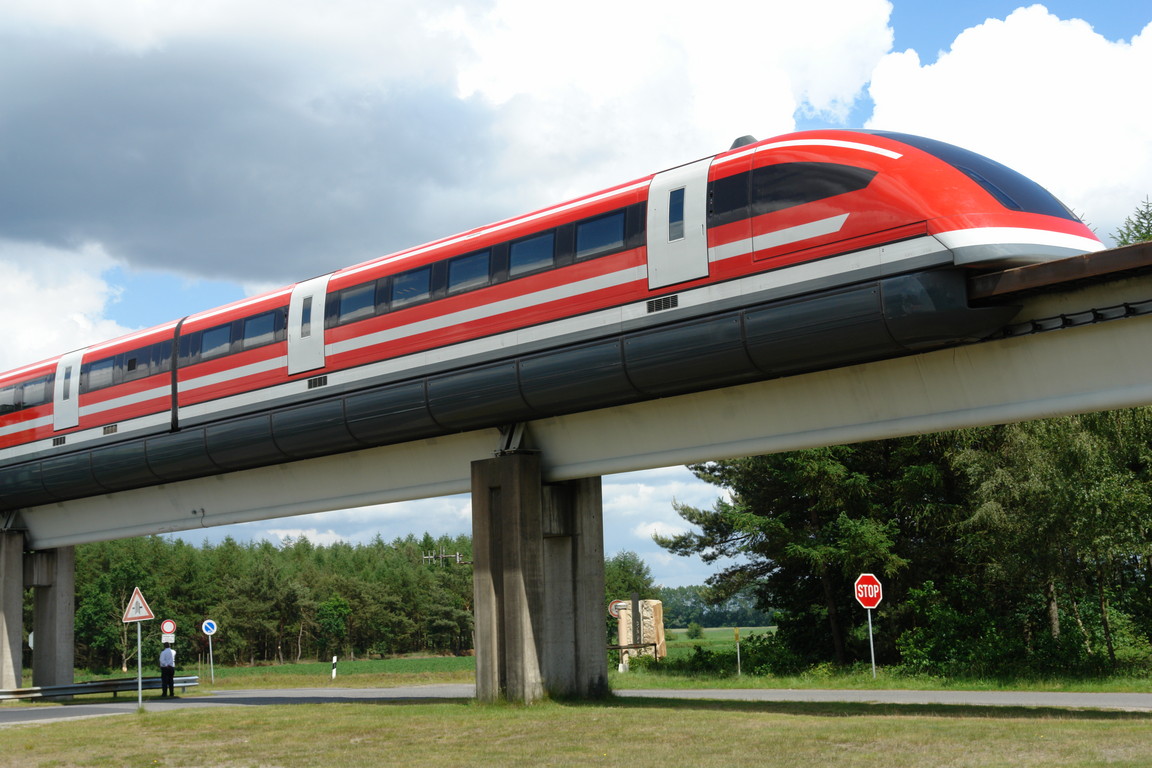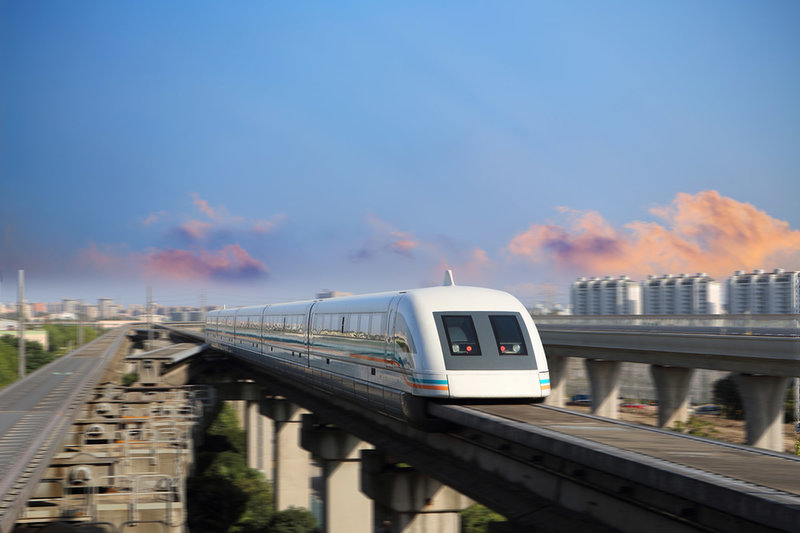Japan’s network is based around superconducting magnets that are able to levitate the train
High hopes: the Chuo Shinkansen line
Japan is betting big on the Chuo Shinkansen maglev line, which will cover the 178-mile distance between Tokyo and Nagoya at speeds of 500km/h, slashing the journey time to just 40 minutes. Scheduled to open commercially in 2027, Japan’s network is based around superconducting magnets that are able to levitate the train by up to 10cm with minimal friction.

A test run takes place with Mount Fuji in the backdrop. Image: Central Japan Railway Company
In 2015, a test run of the maglev train conducted by its operator Central Japan Railway Company (JR Central) saw it reach speeds of over 600km/h, shattering previous world speed records. Since then, JR Central has busied itself with constructing the line, which will predominantly run through tunnels.
The outbreak of the coronavirus pandemic, however, has brought construction work in Tokyo and Kanagawa Prefecture to a halt, after Prime Minister Shinzo Abe declared a national state of emergency in April. JR Central will be champing at the bit to get back to the ¥5.5tn ($49bn) project. It had been scheduled in May to a test a new version of the maglev train before the government issued its shutdown notice.
More efficient: Hitachi unveils new maglev train prototype
Unveiled by Hitachi, the new LO prototype includes two end cars and an intermediate coach (the previous prototype had only one end car). According to JR Central, the latest design offers 13% less air resistance than the previous prototype, creating a significant reduction in noise and power consumption.
The operator is therefore keen to see what the new train – consisting of 12 cars and stretching a total length of 300m – can do on the Yamanashi test line as soon as possible.

The Series L0 train will carry passengers at speeds of up to 500km/hour. Image: Central Japan Railway Company
This might be easier said than done. With Japan already bracing itself for a post-pandemic recession, JR Central’s purse strings are likely to be tightened. Regardless of the economic disruption caused by Covid-19, there are some, however, that believe the maglev project is well in danger of losing money hand over a fist.
“The maglev constitutes not only an extraordinarily costly but also an abnormally energy-wasting project, consuming in operation between four and five times as much power as the Tokaido Shinkansen,” wrote Japanese researchers Hidekazu Aoki and Nobuo Kawamiya in a 2018 paper denouncing the project.
The maglev constitutes not only an extraordinarily costly but also an abnormally energy-wasting project
Tracks will be laid across the central province of Hubei in 2020 to test trains with speeds of up to 1,000km/h
Full speed ahead: China continues to prioritise maglev
Across the East China Sea, Beijing has plans to retain its global position as maglev’s leading exponent – in addition to its ever-growing high-speed rail network. A Communist Party-approved whitepaper published in September 2019, “Outline for Building China’s Strength in Transport”, included an entire chapter on the development of new maglev lines between its key urban hubs.
In October, Changjiang Daily, the official newspaper of Wuhan, reported that tracks would be laid across the central province of Hubei in 2020 to test trains with speeds of up to 1,000km/h, based around a high-temperature, superconducting maglev theory. China Railway Group, a state-owned company, is purported to have already carried out a feasibility study for a new maglev network extending from Guangzhou to Beijing.

In 2015, Japan’s maglev train hit record speeds of over 600km/hour. Image: Central Japan Railway Company
While the project appears to have been temporarily put on ice due to the coronavirus pandemic, China’s emergence from the crisis has seen the resumption of new infrastructure projects.
In late April, Tong Laisheng, director of CRRC’s Maglev Research Institute, revealed tests had been carried out on a new version of a train on the Changsha Maglev Express Line, which links the city in Hunan with Huanghua International Airport. In a statement, Tong said the new rolling stock had successfully hit speeds of 160km/h on the 18.5km line, compared to the 100km/h capacity of the old train.
Forever an outlier: Maglev’s uncertain destiny elsewhere
Outside China, Japan and South Korea – whose first Maglev line, linking Incheon International Airport to Seoul, opened in 2016 – magnetic levitation technology continues to evade mainstream consideration, in spite of its European beginnings.
The UK holds the distinction of operating the first commercial maglev train – the Birmingham Airlink shuttle that ran from 1984 to 1995. Germany looked on course to develop something similar with the Transrapid maglev monorail in Munich, until an accident in 2006 at its test facility, which killed 23, brought progress to a tragic halt.

Transrapid 09 at Germany’s Emsland test facility.
The most common argument levelled against maglev has always been to do with money, given that projects are required to start from scratch and cannot be integrated into a standard rail infrastructure. Floating trains don’t appear to generate much profit, either – a case in point, the line in Shanghai is said to lose around $85m-$100m a year, according to some reports.
As fears mount of a global recession, governments are unlikely to countenance the idea of floating trains for a long time to come, leaving China and Japan as maglev’s only true champions.
The UK holds the distinction of operating the first commercial maglev train
